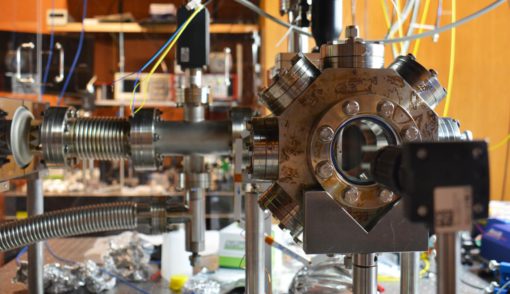
The new optical switch generates only sequences of 0 and 1, but a thorough analysis of the quantum behaviour of atoms might allow sending more combinations of “on” and “off” together, with the simultaneous processing of several data transmissions.
Computers translate, or better digitize letters, numbers, images and sounds into a set of 8 zeroes and ones, i.e. into bytes. The word “test”, for instance, is translated into the sequence 01110000 01110010 01101111 01110110 01100001. If we consider an optical fibre net, when we digit on the keyboard “test”, this information is transferred to a remote computer by sending the previous series of 0 and 1 codified in opportune light signals, actually the light beam is switched off and on by a high-speed switch to generate the sequence of bits, then transformed by a conversion device into electrical signals in a node of the network, for instance a router, and they finally appear in the form of text on the screen of the recipient of the message. This is the standard data transfer method, but the researchers of the Okinawa Institute of Science and Technology (OIST) have identified a more efficient method based on ultra-subtle optical fibres and on a switch on/off that exploits the quantum properties of rubidium atoms in presence of light with different wavelengths, thus creating the conceptual bases of quantum nets, the foreseeable future of Internet. More in detail, an optical nanofiber, with diameter of 350 nanometres, around which are trapped some rubidium atoms, has been used as guide of a 780 and 776 nm light produced by two different lasers. Since the fibre diameter is smaller than the wavelength of the guided light, part of the light signal leaks outside the fibre itself (leak-out effect) and interacts with the rubidium that acts as “quantum node” under all respects, as redistribution point in an optical net. In fact, the off-state of the switch is obtained when the only 780-nm laser is active, since rubidium atoms absorb the maximum of the light exiting from the fibre and no light signal can prosecute, while the on-state is achieved when both lasers are active because in this condition no absorption occurs and the light can prosecute its path. The nanofiber is directly connected with an optical fibre, so that the light can go on, moving on a distance to an eventual similar system for further processing or to a traditional node. These experimental results allow stating that it will be possible to create some real devices based on nanofibres and atoms, exploiting the quantum mechanics.



